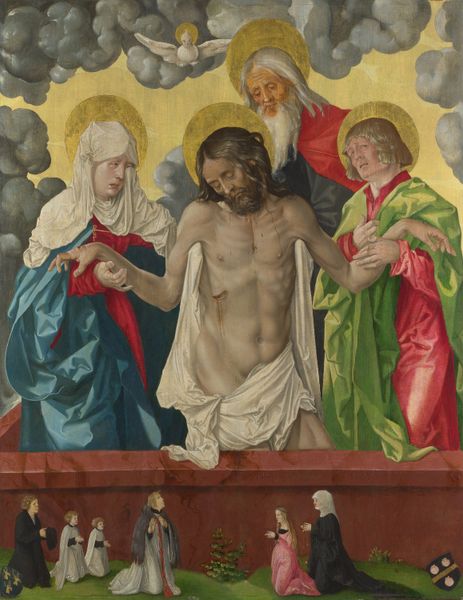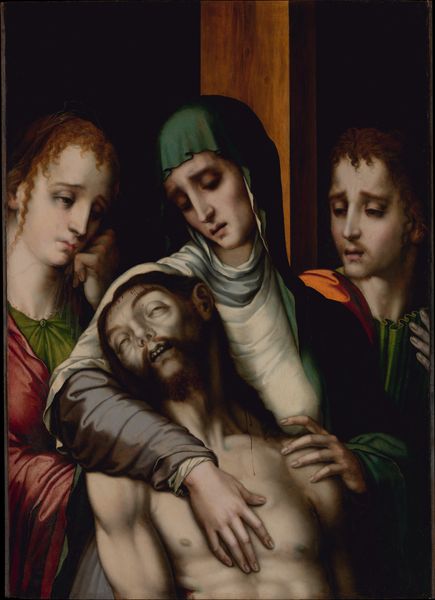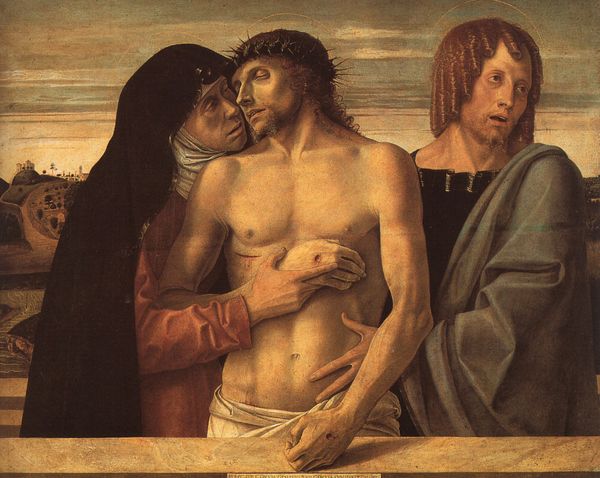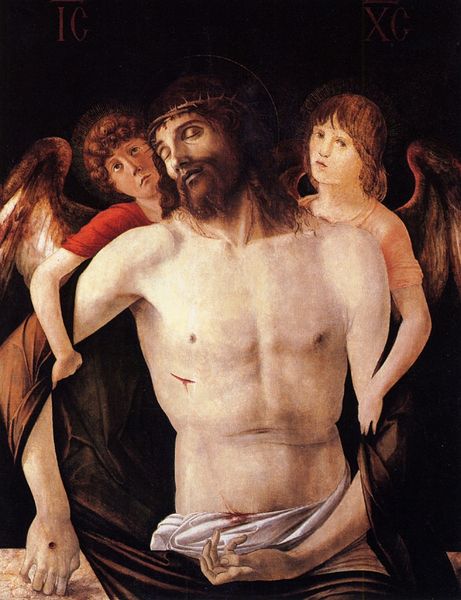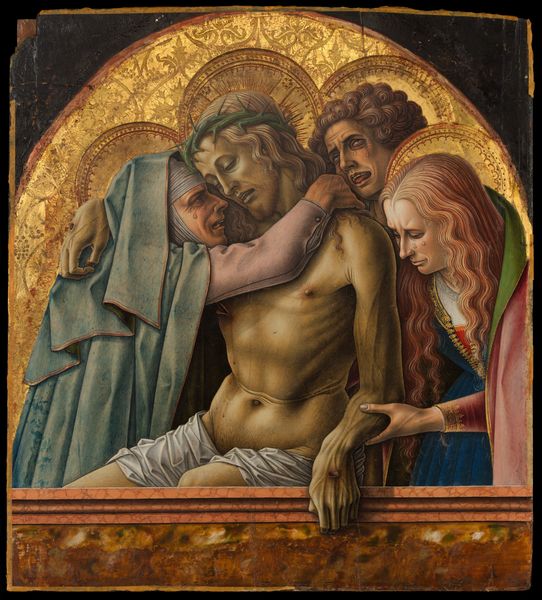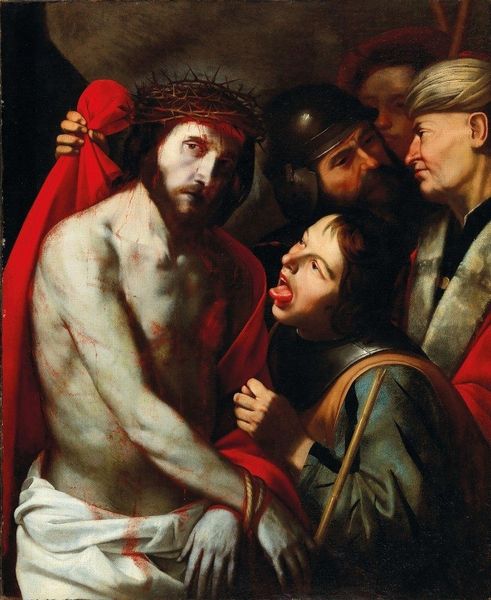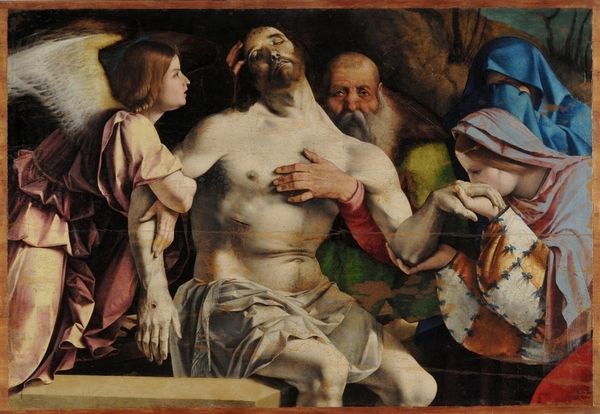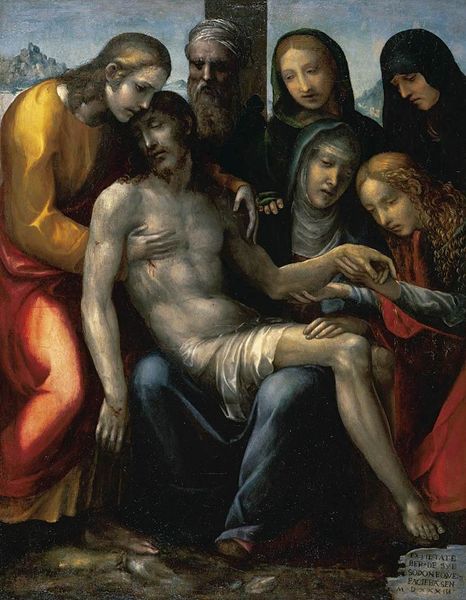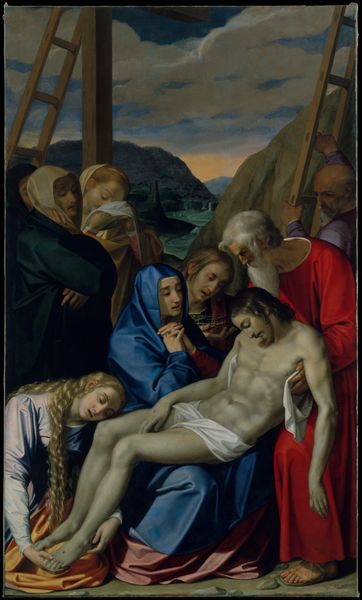
Christ Presented to the People (Ecce Homo) 1540s
0:00
0:00
#
close up portrait
#
neo expressionist
#
portrait head and shoulder
#
animal portrait
#
men
#
window to the soul
#
animal drawing portrait
#
facial study
#
facial portrait
#
portrait art
#
expressionist
#
christ
Dimensions: 23 5/8 x 23 1/4 in. (60 x 59.1 cm)
Copyright: Public Domain
Curator: Welcome. We're standing before Sodoma's "Christ Presented to the People," or "Ecce Homo," dating from the 1540s. It is currently housed at the Metropolitan Museum of Art. Editor: It's... intense. The close-up composition throws you right into the heart of the subject's suffering. The raw emotion on Christ’s face and the expressions of the surrounding figures are unsettling, making me feel trapped within that moment. Curator: Precisely. Observe how Sodoma uses chiaroscuro to heighten the drama. The contrast between light and shadow sculpts Christ's face, drawing our attention to the pain etched in his features. The figures behind him are partially obscured, creating a sense of menacing presence. Editor: But there’s also a distinct class element at play. Look at the diversity in the figures surrounding Christ. Their faces seem to represent the range of power structures complicit in this event. There are suggestions of cultural tension. I see symbols that place blame and expose power. Curator: Yes, consider how Sodoma deviates from strict symmetry in the arrangement of figures. Each person displays unique detail and has individualized expression which seems more interested in raw visual affect. The muted color palette contributes to the gravity, yet also presents a cohesive image. Editor: That might be fair, but how does this fit within its time? Remember this was during a period of political unrest and religious upheaval. Presenting this subject was in itself an act, the figures in the background, with their ambiguous roles and pointed stares, invite us to question complicity, but to recognize similar oppressive systems that echo through history. Curator: An insightful consideration of historical and social contexts. Before we move on, allow me to point out how this is about formal components within this frame of expressive humanity. We notice the masterful rendering of form that conveys emotions through simple, effective means. Editor: But it isn’t simple; there is an incredible amount of intersectional complexity within and behind that seeming "simplicity" – which, ironically, reflects that exact mode of simple power and dismissal of the person in front of you. Curator: Thank you, it's so fascinating how varied viewpoints can illuminate even well known images. Editor: Yes. There are always different vantage points depending on where you are standing and how power is constructed.
Comments
No comments
Be the first to comment and join the conversation on the ultimate creative platform.

